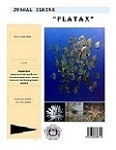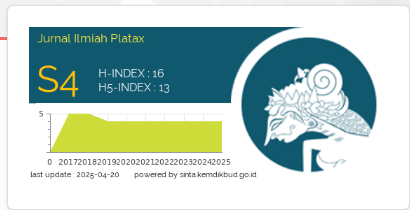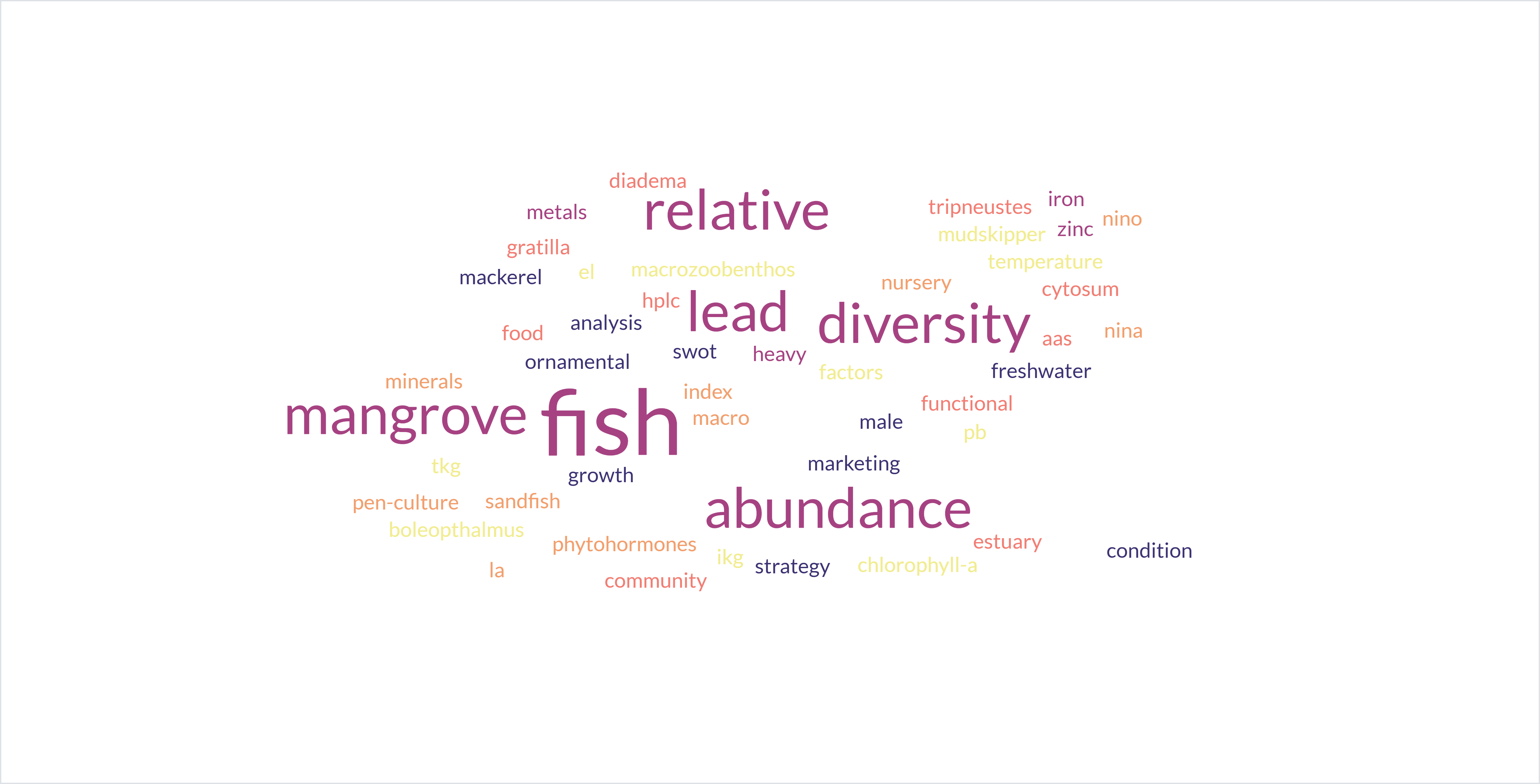Drone for a Cleaner Coast: Monitoring and Analysis of Marine Debris at Sindulang Beach
DOI:
https://doi.org/10.35800/jip.v11i2.51226Keywords:
Marine Debris, Unmanned Aerial Vehicle, SindulangAbstract
This research aims to evaluate the capabilities of the DJI Phantom 4 Pro unmanned aerial vehicle (UAV) in monitoring the accumulation points and analyzing the characteristics of marine debris stranded at Sindulang Beach. The research methodology employed a descriptive approach with a survey method, including data collection through observation, documentation, and direct field surveys. Aerial photos were obtained from the drone, along with ground photography using a GPS map camera and the drone itself. Data analysis was conducted using Agisoft Metashape Professional and ArcGIS 10.8 software to map the distribution of marine debris accumulation points. The drone monitoring results allowed us to describe the characteristics and variations in types of marine debris, with plastic waste dominating, followed by glass, rubber, and fabric debris. The DJI Phantom 4 Pro unmanned aerial vehicle produced high-resolution aerial photos, enabling the identification of the distribution of marine debris accumulation points at Sindulang Beach and the creation of distribution maps along the Sindulang coastal area. The mapping results provide valuable information about the distribution of debris on Sindulang Beach. Based on the monitoring results using the unmanned aerial vehicle (UAV) or drone, it was found that approximately 80% of the intertidal area at Sindulang Beach was covered by debris, indicating a significant level of pollution.
Keywords: Marine Debris, Unmanned Aerial Vehicle, Sindulang
Abstrak
Penelitian ini bertujuan untuk mengevaluasi kemampuan pesawat tanpa awak DJI Phantom 4 Pro dalam pemantauan titik kumpul sebaran marine debris serta menganalisis karakteristik marine debris yang terdampar di Pantai Sindulang. Metode penelitian yang digunakan adalah pendekatan deskriptif dengan metode survei lapangan, termasuk pengumpulan data melalui observasi, dokumentasi, dan survei langsung. Foto udara diperoleh dari drone dan pemotretan darat menggunakan kamera GPS Map serta drone. Data dianalisis menggunakan perangkat lunak Agisoft Metashape Professional dan ArcGIS 10.8 untuk memetakan sebaran titik kumpul sampah laut. Hasil pemantauan dari drone memungkinkan kita untuk mendeskripsikan karakteristik dan variasi jenis sampah laut, dengan dominasi sampah plastik diikuti oleh sampah kaca, karet, dan kain. Pesawat tanpa awak DJI Phantom 4 Pro menghasilkan foto udara dengan resolusi tinggi, yang memungkinkan identifikasi sebaran titik kumpul sampah di Pantai Sindulang serta pembuatan peta sebarannya di sepanjang pesisir laut Sindulang. Hasil pemetaan ini memberikan informasi yang berharga tentang penyebaran sampah di pantai Sindulang. Berdasarkan hasil pemantauan menggunakan Unmanned Aerial Vehicle (UAV) / Drone, ditemukan bahwa sekitar 80% area pasang surut di pantai Sindulang telah tercakup oleh sampah, menunjukkan tingkat pencemaran yang signifikan.
Kata Kunci: Marine Debris, Unmanned Aerial Vehicle, Sindulang
References
Adade, R., Aibinu, A. M., Ekumah, B., & Asaana, J. (2021). Unmanned Aerial Vehicle (UAV) applications in coastal zone management—a review. In Environmental Monitoring and Assessment (Vol. 193, Issue 3). https://doi.org/10.1007/s10661-021-08949-8
Agamuthu, P., Mehran, S. B., Norkhairah, A., & Norkhairiyah, A. (2019). Marine debris: A review of impacts and global initiatives. In Waste Management and Research (Vol. 37, Issue 10). https://doi.org/10.1177/0734242X19845041
Agisoft. (2018). Agisoft PhotoScan User Manual: Professional Edition. Agisoft LLC.
Agisoft Software. (2016). Agisoft PhotoScan User Manual. Professional Edition, Version 1.2.
Aleem, A., Tehsin, S., Kausar, S., & Jameel, A. (2022). Target classification of marine debris using deep learning. Intelligent Automation and Soft Computing, 32(1). https://doi.org/10.32604/iasc.2022.021583
Almeida, S., Radeta, M., Kataoka, T., Canning-Clode, J., Pessanha Pais, M., Freitas, R., & Monteiro, J. G. (2023). Designing Unmanned Aerial Survey Monitoring Program to Assess Floating Litter Contamination. Remote Sensing, 15(1). https://doi.org/10.3390/rs15010084
Bak, S. H., Hwang, D. H., Kim, H. M., & Yoon, H. J. (2019). Detection and monitoring of beach litter using uav image and deep neural network. International Archives of the Photogrammetry, Remote Sensing and Spatial Information Sciences - ISPRS Archives, 42(3/W8). https://doi.org/10.5194/isprs-archives-XLII-3-W8-55-2019
Bao, Z., Sha, J., Li, X., Hanchiso, T., & Shifaw, E. (2018). Monitoring of beach litter by automatic interpretation of unmanned aerial vehicle images using the segmentation threshold method. Marine Pollution Bulletin, 137. https://doi.org/10.1016/j.marpolbul.2018.08.009
Barry, P. J., Beraud, C., Wood, L. E., & Tidbury, H. J. (2023). Modelling of marine debris pathways into UK waters: Example of non-native crustaceans transported across the Atlantic Ocean on floating marine debris. Marine Pollution Bulletin, 186. https://doi.org/10.1016/j.marpolbul.2022.114388
BIN MOHD ZAIDI, M. H. A., & Tahar, K. N. (2021). Evaluation On Different UAV’s Georeferencing Points to Generate Accurate Orthophoto and Digital Terrain Model. Built Environment Journal, 18(2). https://doi.org/10.24191/bej.v18i2.13876
Changsalak, P., & Tiansawat, P. (2022). Comparison of Seedling Detection and Height Measurement Using 3D Point Cloud Models from Three Software Tools: Applications in Forest Restoration. EnvironmentAsia, 15(Special Issue). https://doi.org/10.14456/ea.2022.26
Cordova, M. R. (2017). PENCEMARAN PLASTIK DI LAUT. OSEANA, 42(3), 21–30. https://doi.org/10.14203/oseana.2017.vol.42no.3.82
Escobar-Sánchez, G., Markfort, G., Berghald, M., Ritzenhofen, L., & Schernewski, G. (2022). Aerial and underwater drones for marine litter monitoring in shallow coastal waters: factors influencing item detection and cost-efficiency. Environmental Monitoring and Assessment, 194(12). https://doi.org/10.1007/s10661-022-10519-5
Gonçalves, G., Andriolo, U., Gonçalves, L. M. S., Sobral, P., & Bessa, F. (2022). Beach litter survey by drones: Mini-review and discussion of a potential standardization. In Environmental Pollution (Vol. 315). https://doi.org/10.1016/j.envpol.2022.120370
Johan, Y., Renta, P. P., Muqsit, A., Purnama, D., Maryani, L., Hiriman, P., Rizky, F., Astuti, A. F., & Yunisti, T. (2020). ANALISIS SAMPAH LAUT (MARINE DEBRIS) DI PANTAI KUALO KOTA BENGKULU. JURNAL ENGGANO, 5(2), 273–289. https://doi.org/10.31186/jenggano.5.2.273-289
Junarto, R., & Djurjani, D. (2020). Pemanfaatan Teknologi Unmanned Aerial Vehicle (UAV) untuk Pemetaan Kadaster. BHUMI: Jurnal Agraria Dan Pertanahan, 6(1). https://doi.org/10.31292/jb.v6i1.428
Kandrot, S., Hayes, S., & Holloway, P. (2022). Applications of Uncrewed Aerial Vehicles (UAV) Technology to Support Integrated Coastal Zone Management and the UN Sustainable Development Goals at the Coast. In Estuaries and Coasts (Vol. 45, Issue 5, pp. 1230–1249). Springer. https://doi.org/10.1007/s12237-021-01001-5
Magalhães, D. M. de. (2021). USO DE DRONES COMO SUPORTE AO PLANEJAMENTO TERRITORIAL: da coleta de dados à geovisualização. Frontiers in Neuroscience, 14(1).
Saputra, A., Nurhakim, N., & Syafi’i, A. A. (2022). Pemanfaatan foto udara untuk penyusunan peta desa dan pemetaan potensi desa berbasis sistem informasi geografis. Jurnal Himasapta, 7(3). https://doi.org/10.20527/jhs.v7i3.7500
Sari, M. M., Inoue, T., Harryes, R. K., Wayan Koko Suryawan, I., Yokota, K., Notodarmojo, S., & Priyambada, I. B. (2022). Potential of Recycle Marine Debris in Pluit Emplacement, Jakarta to Achieve Sustainable Reduction of Marine Waste Generation. International Journal of Sustainable Development and Planning, 17(1). https://doi.org/10.18280/ijsdp.170111
Watson, A. R., Blount, C., McPhee, D. P., Zhang, D., Smith, M. P. L., Reeds, K., & Williamson, J. E. (2022). Source, fate and management of recreational fishing marine debris. In Marine Pollution Bulletin (Vol. 178). https://doi.org/10.1016/j.marpolbul.2022.113500
Wuisan, M. M. (2013). PERANCANGAN PESISIR SINDULANG SEBAGAI KAWASAN PARIWISATA TRADISIONAL.
Yohanlis, A. D., & Putri, M. R. (2021). Identification of Marine Debris and Its Distribution Using Unmanned Aerial Vehicle (UAV) on the Cirebon Coastal Area, Indonesia. IOP Conference Series: Earth and Environmental Science, 925(1). https://doi.org/10.1088/1755-1315/925/1/012038
Downloads
Published
How to Cite
License
Copyright (c) 2023 Joyce Kumaat, Grace Ezlin Batee

This work is licensed under a Creative Commons Attribution-NonCommercial 4.0 International License.
COPYRIGHT
Authors who publish with this journal agree to the following terms:
Authors hold their copyright and grant this journal the privilege of first publication, with the work simultaneously licensed under a Creative Commons Attribution License that permits others to impart the work with an acknowledgment of the work's origin and initial publication by this journal.
Authors can enter into separate or additional contractual arrangements for the non-exclusive distribution of the journal's published version of the work (for example, post it to an institutional repository or publish it in a book), with an acknowledgment of its underlying publication in this journal.
Authors are permitted and encouraged to post their work online (for example, in institutional repositories or on their website) as it can lead to productive exchanges, as well as earlier and greater citation of the published work (See The Effect of Open Access).






































